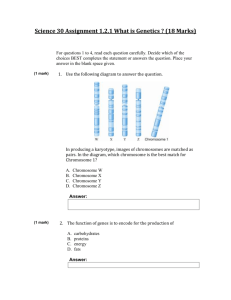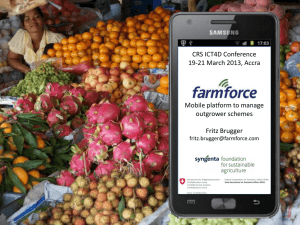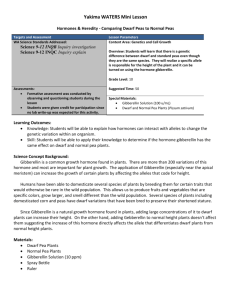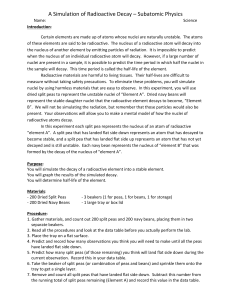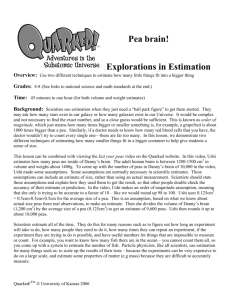Pea Presentation
advertisement
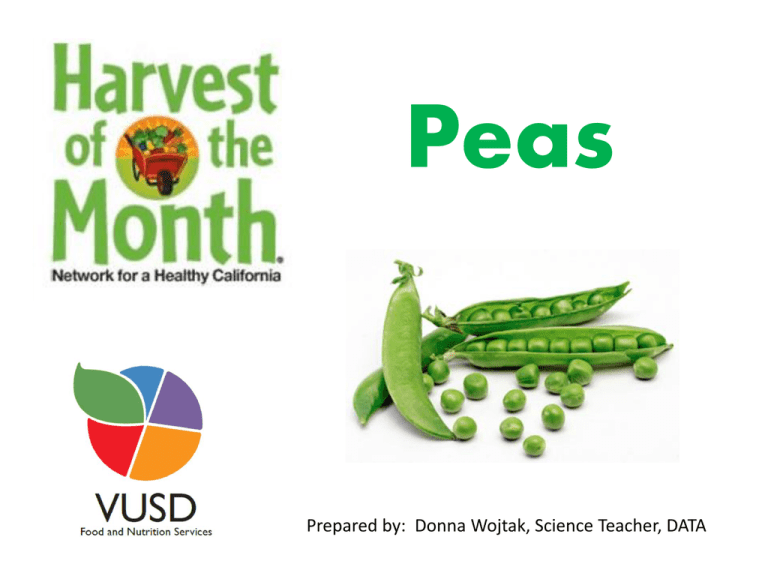
Peas Prepared by: Donna Wojtak, Science Teacher, DATA Friendly Farmer Phil • Phil McGrath is a 4th generation farmer. He is the current owner of McGrath Family Farms. • McGrath Family Farms has harvested approximately 2,500 lbs of peas for schools in Ventura County. • He likes growing food for the schools because he thinks kids deserve clean, fair food. Also, it strengthens the local economy. • What he likes most about being a farmer is feeding people and being outside. A Pod in Pea History Three possible origins of peas include: Middle Asia (Thailand, Burma), India through Afghanistan, Near East, Ethiopia. Carbonized pea seeds found in the Near East and Switzerland date back as far as 10,000 years. Early pea varieties have been found among the ruins of Troy and in tombs of Egypt. The cultivation of peas spread throughout Europe, India, and China about 4,000 years ago. Peas were a dietary winter staple of both peasants and royalty in medieval Europe. In 1492, Christopher Columbus planted peas in Santo Domingo, where indigenous people quickly adopted them. Easy to grow, peas were commonly planted by early American colonists and later by pioneer traveling west. Just the Facts The sugar snap pea is actually a hybrid of green and snow peas. It was developed in 1979 to make an edible-pod variety with sweeter, full-sized peas. Edible-pod peas were specifically bred so that the pods’ fibers go in one direction, allowing them to be chewed. Today, only 5% of all peas grown are sold fresh; over half are canned and most are frozen. One of Thomas Jefferson’s favorite vegetables was the English pea. He planted more than 30 varieties of it in his garden at Monticello. What’s the Difference? English Pea Snow Pea Need to be shelled before eating Can eat the whole pea pod. Round peas or berries The pod is flat and peas are visible through the shell Snap Pea Very similar to the English Pea but does not need to be shelled Home Grown Facts Green peas are among the top ten most commonly eaten vegetables (fresh, frozen, or canned) by California children. California leads in the nation’s production of Chinese peas (an edible-pod variety). Edible-pod peas are grown year-round in Santa Barbara and San Luis Obispo counties. Santa Barbara, San Luis Obispo, Monterey, and Stanislaus counties are the top four producing counties in California, growing more than 80% of the state’s supply. Reasons to Eat Peas A ½ cup of fresh or cooked peas provides: An excellent source of vitamin K A good source of vitamin A, vitamin C, fiber, folate, and thiamin A source of protein and iron


